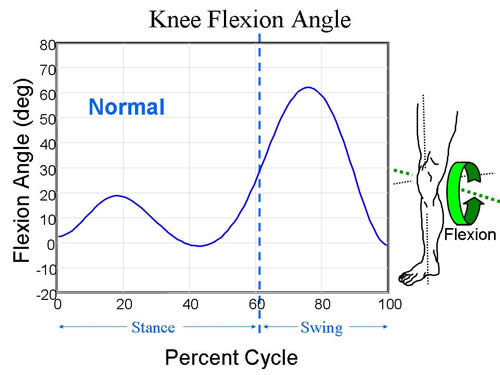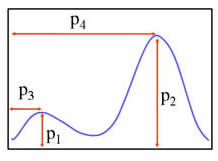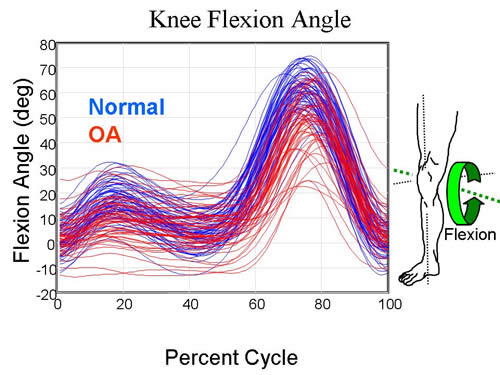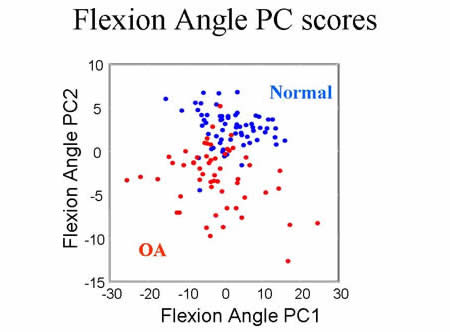Most biomechanical data characterizing human movment appear as temporal waveforms representing specific joint measures such as angles, moments, or forces. An example shown below is the knee joint angle during walking. The knee flexion angle waveform for a normal subject is shown normalized to 100% of the gait cycle.

A common method of analysing such data is to define and extract parameters from the waveforms (ranges, peak values, etc.). While this accomplishes data reduction through the subjective selection of data, the resulting set of parameters are highly correlated. Furthermore, it is often difficult to defining these parameters in cases where the data are measured from diseased joints.

Principal component analysis (PCA) is a multivariate statistical technique that can be used to extract features of variation from the data. Individual waveforms are associated with a score for each of the extracted features, or principal components. In this way the waveform data is transformed into a new set of principal component scores. For example, we can consider the knee flexion angle waveforms from group of healthy subjects (shown in blue) and a group of subjects with knee osteoarthritis (shown in red).

The data from the two groups is overlapping, but differences in the pattern of the waveforms can be seen. For example the red waveforms appear flatter than the blue ones. Principal component analysis on these data reveals variation in magnitude (mean level of the waveform) and amplitude (range of motion), and these are the first two features of variation (or principal components). Each subject is associated with a score for each of these features, and a scatterplot reveals group separation. In the figure, below, it can be seen how the two groups can be separated using the PC scores.

We have used Principal Component Analysis in a variety of applications to quantify differences in gait patterns. Current research in this area is focussed on extending these pattern recognition techniques to increase the sensitivity and interpretability.